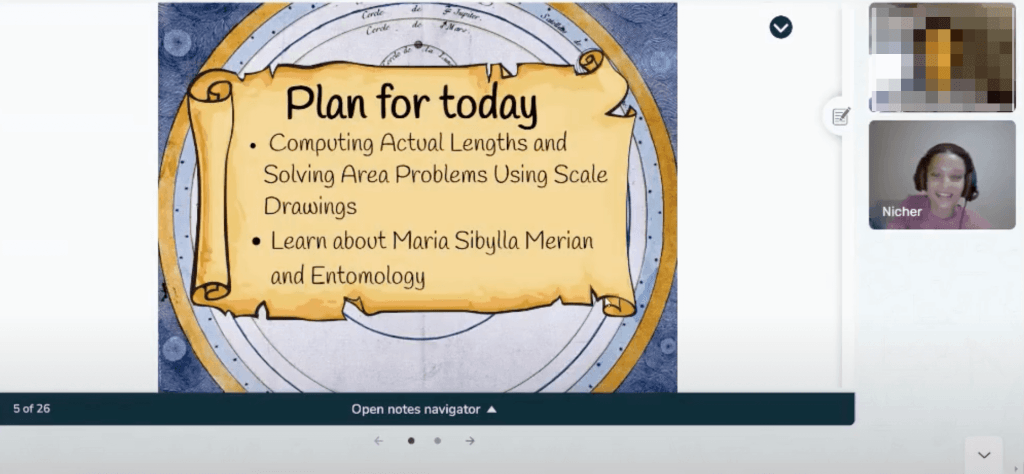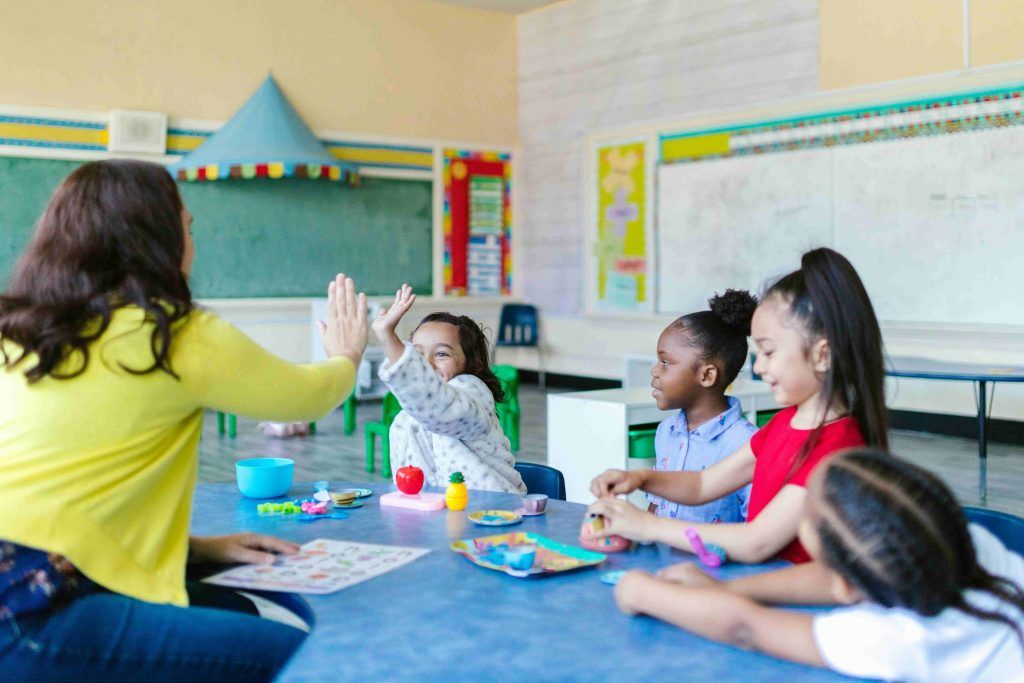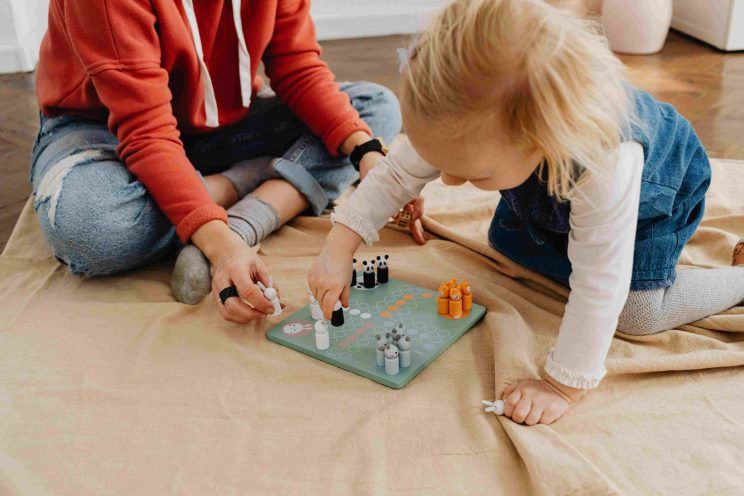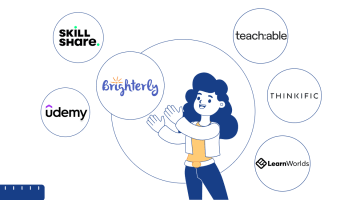30+ Hands-On Math Activities
reviewed by Jo-ann Caballes
Updated on June 30, 2025
Many children hate math, and it’s not a surprise – math requires serious memorization and analytical skills, which can be hard to develop in some cases, especially in public schools. Hands-on math activities can help alleviate some of this frustration by incorporating a broader understanding of HOW math works. Here are some ideas for hands-on math activities for elementary students.
Hands-on math activities with Brighterly tutors
Brighterly recognizes the great importance of hands-on, fun math activities for elementary students. With that in mind, our curriculum developers are constantly working to make our math activities interactive and fun yet as efficient as possible.
Math is a different journey for every kid. Some might take it harder due to comprehension, attention, and problem-solving challenges. With a proper approach and professional tutoring, every kid can maximize their potential in math. At Brighterly, it is our mission to help kids and teens from the age of 6 to 18 make this journey fun, enjoyable, and wholesome.

Brighterly tutors know that elementary students need hands-on math activities that are engaging, simple, and visually appealing in order to grasp the basics. Effective hands-on math activities include the use of small, colorful objects like buttons to practice counting, addition, and subtraction. We also use math card games for elementary students to help kids with memorization and repetition.
Hands-on math activities for preschoolers
If you want to practice hands-on math activities with your preschoolers at home, here are some:
- Puzzles Count
- Flip Cards to Find a Match
- Counting Blocks
- Tag the Number
- Steps Count
- Parking toy cars
- Sort Candies by Shape
Hands-on math activity #1: Puzzles Count
Puzzles are a fun way for young children to practice recognition skills and numbers. You’ll need 20 pieces of cardstock where you would write 1 – 10 digits on one stock and 10 pieces with the corresponding number of dots or shapes. Then, ask your preschooler to match or connect them.
Hands-on math activity #2: Flip cards to find a match
Use Uno cards here; they are a perfect option for a matching game to improve memory! Flip the cards so your kid can’t see the number. The idea is to pick up two cards, if they match, you can keep the set. If they don’t keep looking for a match (but take turns!). The person who has the most sets wins.
Hands-on math activity #3: Counting Blocks
Another fun game to practice in math is counting blocks. In this game, you’ll need dice and stacking blocks. Let your kid roll the dice and then build a tower with the number of blocks they get. Once they progress to more towers, ask them to count how many they have.
Hands-on math activity #4: Tag the Number
If you have a hyperactive kid, there’s an activity that combines moving and memorizing numbers. Write individual numbers on sticky notes and tape them around your house or room. Then, declare a number and ask your kid to run to that number and tap it. Whoever finds the number first wins!
Hands-on math activity #5: Steps Count
This game is kind of self-explanatory: ask your kid to count their steps. For example, ask them how many steps it would take for them to walk towards your car or a driveway. Then, let them count their steps and see if their guess was accurate.
Hands-on math activity #6: Parking toy cars
Ideal for kids who love toy cars! Add numbers to them and create a parking area with numbered slots. Now, your kid can arrange their toy cars in the correct parking lot.
Hands-on math activity #7: Sort Candies by Shape
This is a great Halloween activity! Give your kid a bowl of candy and ask them to sort it out by shape, color, etc. Next, let them count the categories and how many sweets they have in each row. Reward them with one candy from each category at the end!
It may seem unnecessary to bore your preschoolers with math-based hands-on activities. However, research has shown that younger kids (as young as three months old) can understand differences in numerical quantity. So, if you think that your kid is not ready, they are. Additionally, kids who develop stronger mathematical skills earlier in life are more likely to show exceptional results in school than their peers.
Fun math activities for primary students
Primary students like fun games as much as preschoolers. Play-based learning in math has also been shown to be highly effective in understanding mathematical concepts. Hands-on math activities like building with blocks, playing board games, and role-playing can help kids with numeration, patterns, classification, and multiplication.
7 hands-on math activities for primary students
- Math Bingo
- Math Scavenger Hunt
- Shape Art
- Measurements Station
- Math Boards Games
- Interactive Math Apps
- Fraction Pizza
Math Bingo
All you need to do is create bingo cards with a series of numbers. Choose questions randomly, and if the answer is on a kid’s bingo card, ask them to mark it.
Math Scavenger Hunt
A scavenger hunt is a great way for kids to train their attention. Ask kids to find objects that represent different numbers or shapes. For example, to find three items that are circles.
Shape Art
Make different cut-out shapes and ask your kid to create a picture using these shapes. Then, ask them to describe their artwork with the names of the shapes.
Measurements Station
Arrange a collection of items along with rulers, measuring tapes, and cups. Ask your kid to measure every item.
Math Boards Games
Play board games like “Monopoly Junior,” “Sum Swamp,” or “Math Bingo” to practice math skills in a fun, interactive way.
Interactive Math Apps
Add educational math games to your kid’s screen time. Math apps offer interactive challenges that train memory, counting, and more.
Fraction Pizza

Cook pizza with your kids. Pizza can be divided into fractions. Ask them to add toppings to show different fractions (for example, half with pepperoni and a quarter with mushrooms).
First grade hands-on math activities
Hands-on math activities for your 1st grader include:
- Composing shapes together with pattern blocks
- Using coins to practice money skills
- Telling time with eggs
- Making a domino track
- Using tools like pop-its
Using tools like pop-its is highly effective with younger kids, who don’t have much attention span. What you can do with a pop-it:
- You can use them to practice counting (pop a circle and count it down).
- Pop-its are great for kinesthetic kids.
- 10×10 pop-its can help children practice counting to 100, counting by ten, and noticing patterns within a hundred.
Note: 1st grade students absolutely love hands-on math. It is a sure way to help your kid increase engagement and effectiveness while learning math.
Math songs are another way to make your kid practice hands-on math. Not only do they help children remember things better, but they make everything much more fun overall.
Hands-on math activities for 2nd grade
Note: Most children start 2nd grade knowing how to add numbers up to 20. That means that your hands-on math activities should get a little more elaborate to help your kid transition to more complex math concepts.
Money Math
Obviously, you don’t need to play with real money — play money is enough. Create a “store” with items from your house and play checkout with your kid. In that way, they can practice counting money, making changes, and understanding the value of different coins and bills.
Pattern Blocks
Pattern blocks are great for learning about symmetry and spatial reasoning! Use them to design and teach your kids geometric shapes.
Time Telling with Clock
Telling time is another activity that boosts math skills. Move the hands of the clock to show different times, and have your kid practice setting the clock to the correct time.
Fraction Fun with Food
Same with pizza toppings, but adding more complex fractions is advisory. Cut food into halves, thirds, and quarters and discuss the fractions.
Measuring with Units
Ask your kid to measure items around the room using non-standard units like paperclips, blocks, or their own feet.
3rd grade hands-on math activities
Many 3rd grade students need some extra practice with topics like place value, division, multiplication, measurement, and rounding. It’s time they step up their game, as school math is getting harder.
Top multiply hands-on math activities for elementary students:
- Counting Dots to Learn Multiplication
- Introduce Rounding with Cards
- Use LEGO Bricks for Fractions
- Telling Time to the Minute
- Color a Polygon Quilt
Counting Dots to Learn Multiplication
The idea is to turn over two cards and then draw a grid, placing dots at the intersections where the lines cross. Then count the dots. Whoever has the most number of dots wins!
Introduce Rounding with Cards
Rounding numbers come to the scene in the 3rd grade. In this card game, flip over two cards and round the resulting number to the nearest 10.
Use LEGO Bricks for Fractions
In this game, draw cards with fractions, and ask your kid to use colored bricks to represent the fraction shown.
Telling Time to the Minute
You might have already taught your kid to tell time in previous years, but now, roll the dice and ask them to represent the proper time on their toy clock (to the minute!).
Color a Polygon Quilt
Get a polygon quilt and ask your kid to color four connected triangles at a time. The person with the most shapes wins.
4th grade hands-on math activities
4th grade math introduces division with remainders, decimals, fractions, and place value. Children benefit from fun math activities for elementary students that make abstract concepts tangible and engaging. Especially if you include tools to help them understand math concepts.
Hands on tools for elementary math include blocks and fraction tiles to explore arithmetic and fractions, measuring length, volume, and weight in real-world contexts, and creating shapes to learn geometry concepts.
Money (or at least play money) helps them develop budgeting skills and teach counting. Time-telling with analog clocks, math games, problem-solving challenges, building projects, and interactive technology also enhance their learning experience by making math both practical and fun.
Fun math activities for 5th grade
Aside from the usual worksheets, the best math activities are mental math and problem-solving games with your kid. These include math, paper, scissors, the yes/no game, the 24 game.
Note: In 5th grade math, kids work with larger numbers for the 4 operations. Algebra and coordinate planes are also introduced for the first time. They are now able to cope with more complex concepts, so it’s important to break up their math studies with some fun math hands-on activities.
Sometimes, these little charades are not enough for your kid to succeed in math. In that case, hiring an experienced tutor could be a great solution. One-on-one tutoring can drastically change how your child views math, shifting their perception from just memorizing to actually understanding math concepts.
Tutoring services like Brighterly, focus on the most effective methods and tactics for teaching children and teens. Claim a free trial math lesson to explore more about how Brighterly can help your kid learn math while having fun.
Math hands on activities high school
Math hands-on activities in high school don’t involve much play anymore as children begin to apply complex math concepts in real life.
What makes math relevant and more engaging for students? Math competitions, strategy games, and real-world problem-solving scenarios, such as optimizing delivery routes or planning construction projects, enhance logical thinking and practical math skills, preparing children for everyday challenges.
Conclusion
Now, math isn’t all fun and games, but when it comes to younger students, it is the main idea. Hands-on math activities are crucial for making math more accessible, interactive, and engaging. Kids of all ages need practical and interactive methods to help alleviate math frustration, making learning math a little bit easier.
Brighterly’s goal is to inspire your kids to love math through fun one-on-one tutoring that focuses on the kid’s unique character and skills.
Book your first free session today and help your kid have a more pleasant math experience!















